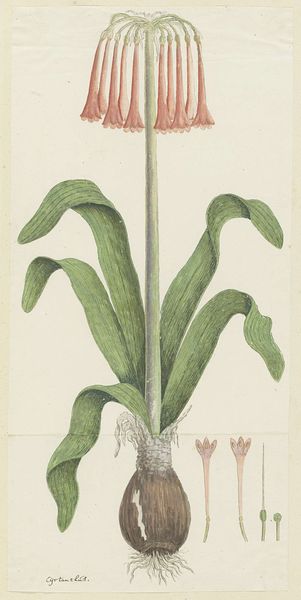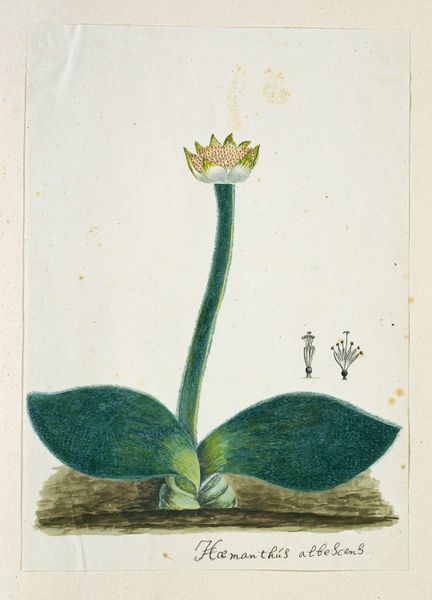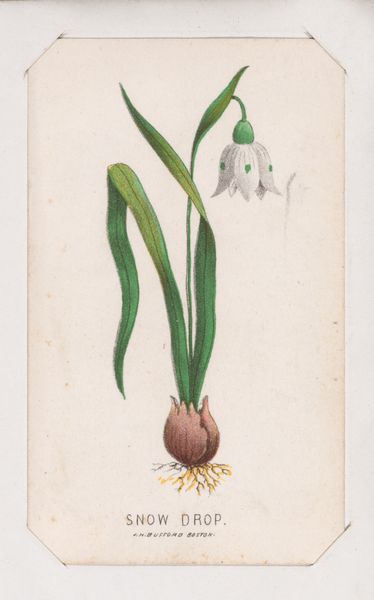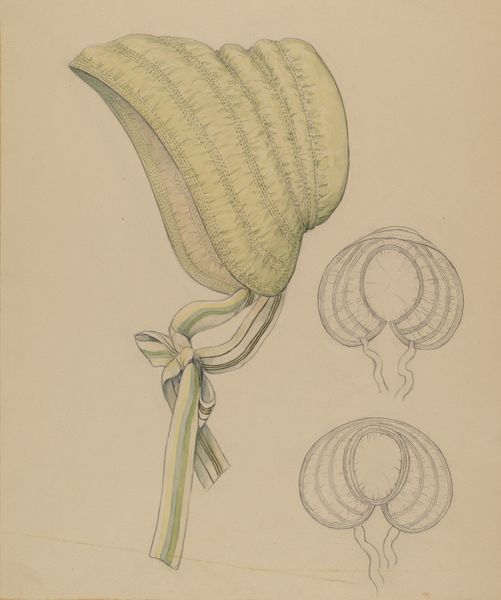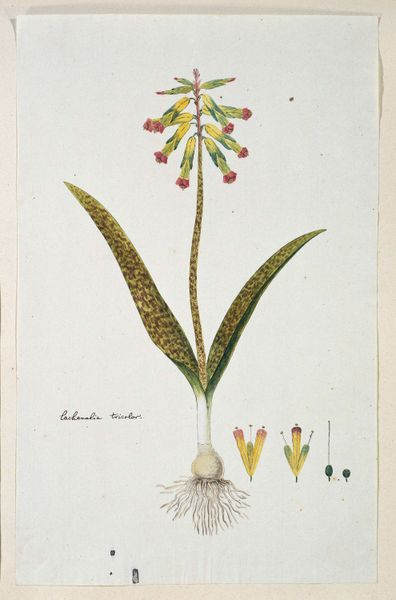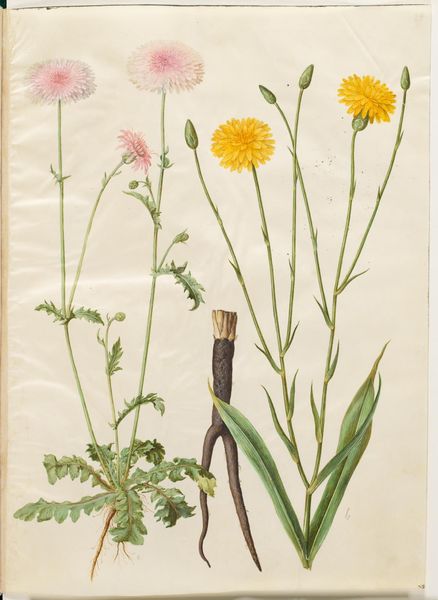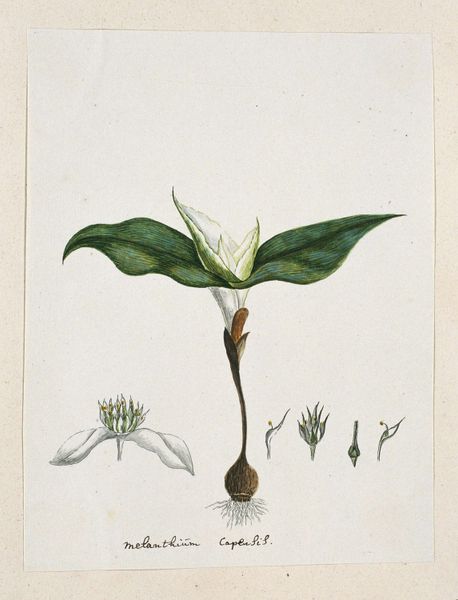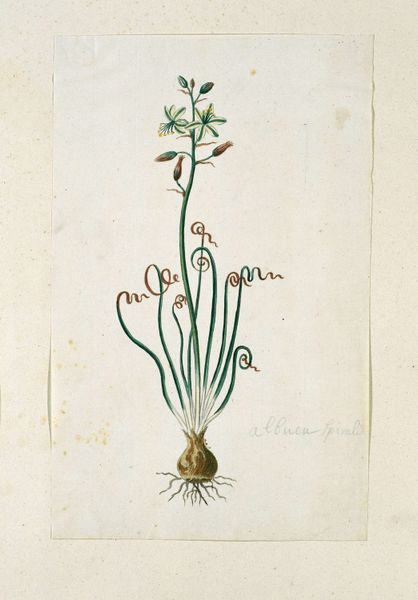
Dimensions: height 660 mm, width 480 mm, height 473 mm, width 332 mm, height mm, width mm
Copyright: Rijks Museum: Open Domain
Robert Jacob Gordon made this watercolor drawing of the Cyranthus obliquus, or Knysna lily, sometime before his death in 1795. Gordon was a Dutch military officer and explorer of Scottish descent, working for the Dutch East India Company. This botanical study reflects a broader cultural interest in natural history during the Enlightenment. Expeditions to distant lands frequently included naturalists and artists who cataloged new species for scientific study, as well as for the visual consumption of European audiences. The Knysna lily, native to South Africa, would have been exotic and unfamiliar to European viewers. Gordon's rendering of the lily isn't just an objective record; it reflects the complex social and political context of colonialism, where the pursuit of knowledge was intertwined with economic and territorial expansion. To fully understand this image, we would delve into the archives of the Dutch East India Company, exploring how scientific illustration became a tool of empire.
Comments
No comments
Be the first to comment and join the conversation on the ultimate creative platform.
